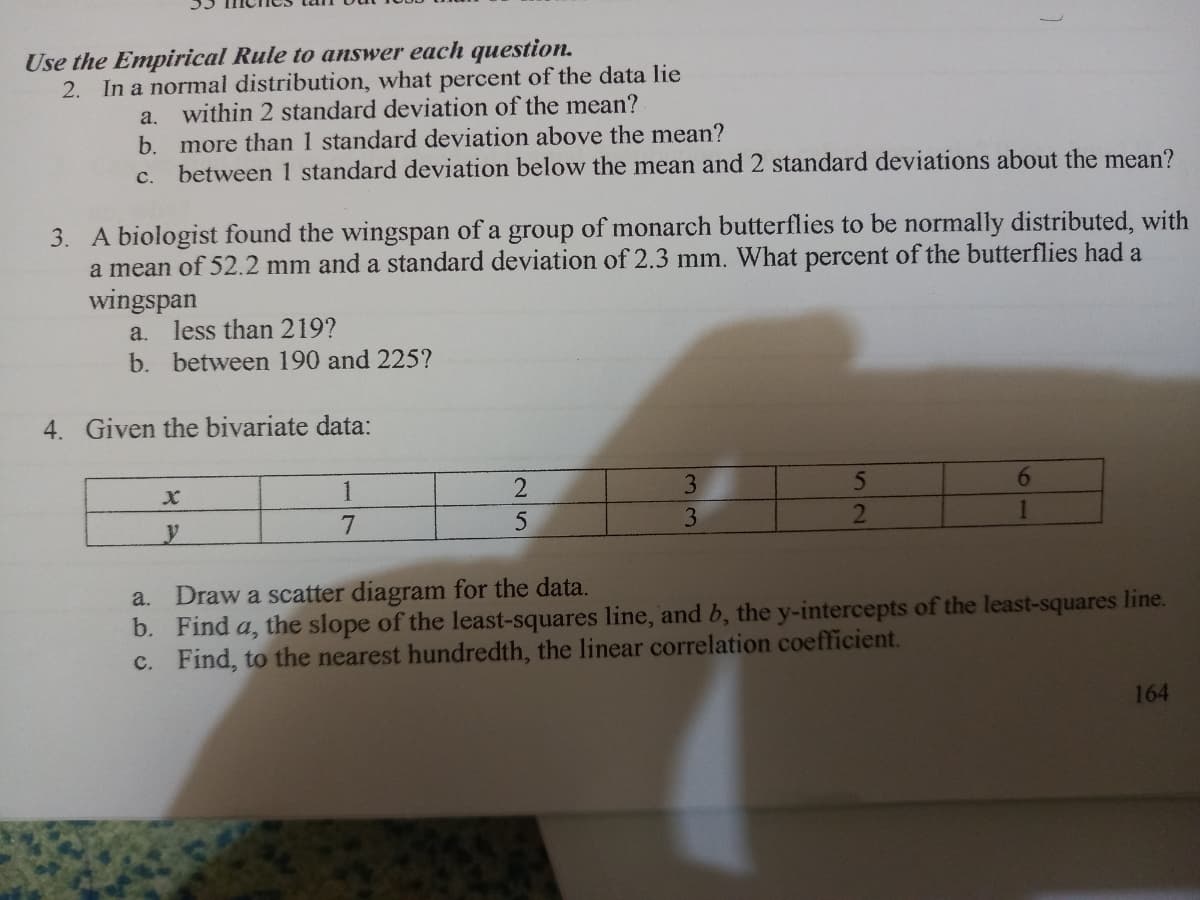Use the Empirical Rule to answer each question. 2. In a normal distribution, what percent of the data lie a. within 2 standard deviation of the mean? b. more than 1 standard deviation above the mean? C. between 1 standard deviation below the mean and 2 standard deviations about the mean?
Use the Empirical Rule to answer each question. 2. In a normal distribution, what percent of the data lie a. within 2 standard deviation of the mean? b. more than 1 standard deviation above the mean? C. between 1 standard deviation below the mean and 2 standard deviations about the mean?
Glencoe Algebra 1, Student Edition, 9780079039897, 0079039898, 2018
18th Edition
ISBN:9780079039897
Author:Carter
Publisher:Carter
Chapter10: Statistics
Section10.3: Measures Of Spread
Problem 26PFA
Related questions
Question

Transcribed Image Text:Use the Empirical Rule to answer each question.
2. In a normal distribution, what percent of the data lie
a. within 2 standard deviation of the mean?
more than 1 standard deviation above the mean?
between 1 standard deviation below the mean and 2 standard deviations about the mean?
b.
с.
3. A biologist found the wingspan of a group of monarch butterflies to be normally distributed, with
a mean of 52.2 mm and a standard deviation of 2.3 mm. What percent of the butterflies had a
wingspan
less than 219?
b. between 190 and 225?
a.
4. Given the bivariate data:
1
3
7
3
2
Draw a scatter diagram for the data.
b. Find a, the slope of the least-squares line, and b, the y-intercepts of the least-squares line.
c. Find, to the nearest hundredth, the linear correlation coefficient.
a.
164
Expert Solution
This question has been solved!
Explore an expertly crafted, step-by-step solution for a thorough understanding of key concepts.
Step by step
Solved in 2 steps with 1 images

Recommended textbooks for you

Glencoe Algebra 1, Student Edition, 9780079039897…
Algebra
ISBN:
9780079039897
Author:
Carter
Publisher:
McGraw Hill

Glencoe Algebra 1, Student Edition, 9780079039897…
Algebra
ISBN:
9780079039897
Author:
Carter
Publisher:
McGraw Hill